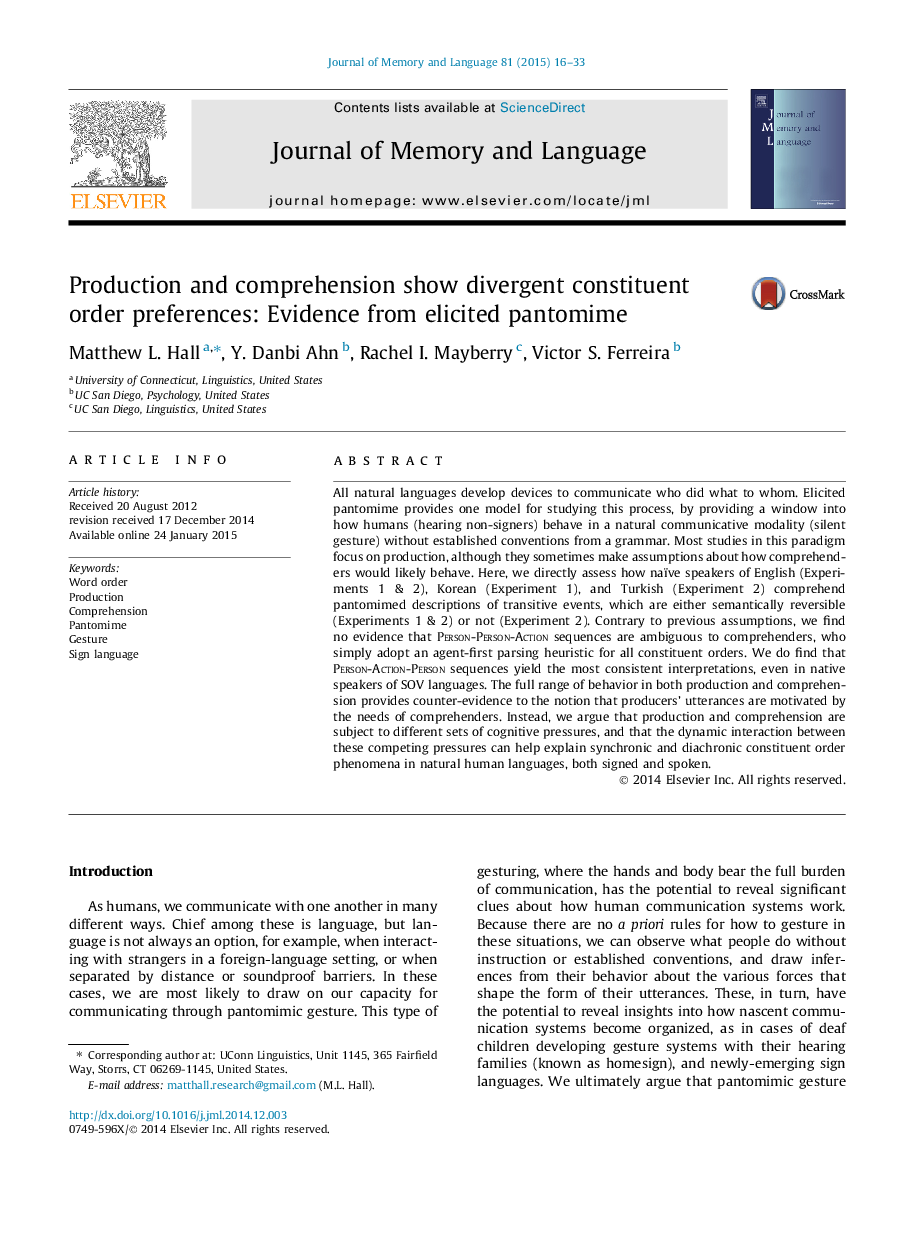| کد مقاله | کد نشریه | سال انتشار | مقاله انگلیسی | نسخه تمام متن |
|---|---|---|---|---|
| 931796 | 1474638 | 2015 | 18 صفحه PDF | دانلود رایگان |
• Expt 1: English (SVO) & Korean (SOV) speakers interpreted pantomimed descriptions of reversible events.
• Both groups used an “Agent-First” parsing heuristic across all orders.
• Expt 2: English (SVO) & Turkish (SOV) speakers rated pantomime-to-event correspondences.
• Likelihood judgments in comprehension differed from actual likelihood in production.
• Results suggest that interplay between production and comprehension shapes constituent order.
All natural languages develop devices to communicate who did what to whom. Elicited pantomime provides one model for studying this process, by providing a window into how humans (hearing non-signers) behave in a natural communicative modality (silent gesture) without established conventions from a grammar. Most studies in this paradigm focus on production, although they sometimes make assumptions about how comprehenders would likely behave. Here, we directly assess how naïve speakers of English (Experiments 1 & 2), Korean (Experiment 1), and Turkish (Experiment 2) comprehend pantomimed descriptions of transitive events, which are either semantically reversible (Experiments 1 & 2) or not (Experiment 2). Contrary to previous assumptions, we find no evidence that Person-Person-Action sequences are ambiguous to comprehenders, who simply adopt an agent-first parsing heuristic for all constituent orders. We do find that Person-Action-Person sequences yield the most consistent interpretations, even in native speakers of SOV languages. The full range of behavior in both production and comprehension provides counter-evidence to the notion that producers’ utterances are motivated by the needs of comprehenders. Instead, we argue that production and comprehension are subject to different sets of cognitive pressures, and that the dynamic interaction between these competing pressures can help explain synchronic and diachronic constituent order phenomena in natural human languages, both signed and spoken.
Journal: Journal of Memory and Language - Volume 81, May 2015, Pages 16–33
